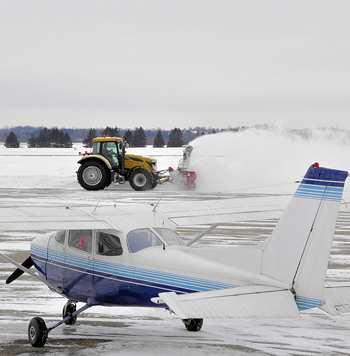Subscriber question:
"Is it true that if it's snowing, there's no icing threat in those clouds?" — Ron B.
Scott:
 “One of the old wives’ tales is that snow-producing clouds are not an icing threat. In other words, if snow is reaching the surface, the clouds that are producing the snow are safe to fly through.
“One of the old wives’ tales is that snow-producing clouds are not an icing threat. In other words, if snow is reaching the surface, the clouds that are producing the snow are safe to fly through.
Unfortunately, that’s not always true.
Clouds producing snow mean only one thing: Icing is unlikely between the cloud base and surface.
Snow or ice crystals in a cloud tend to deplete the cloud of supercooled liquid water, thus lessening the icing threat. When ice crystals form in a cloud, any liquid drops in the cloud begin to evaporate. Water vapor prefers to deposit on these ice crystals as opposed to condensing on the remaining cloud drops. As a result, ice crystals tend to grow at the expense of supercooled liquid water.
At any particular moment, however, a cloud can be mixed phase, consisting of both ice crystals and supercooled liquid water.
The Current Icing Product, Forecast Icing Product, and pilot reports are useful to determine if there’s an icing potential in these snow-producing clouds.”
Access the weather tools mentioned above, as well as the icing G-AIRMET for help predicting icing potential in the clouds.
Have you ever encountered unforecast icing in the clouds?
